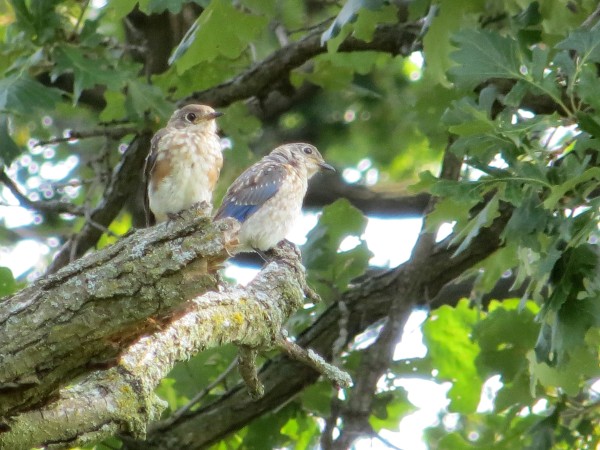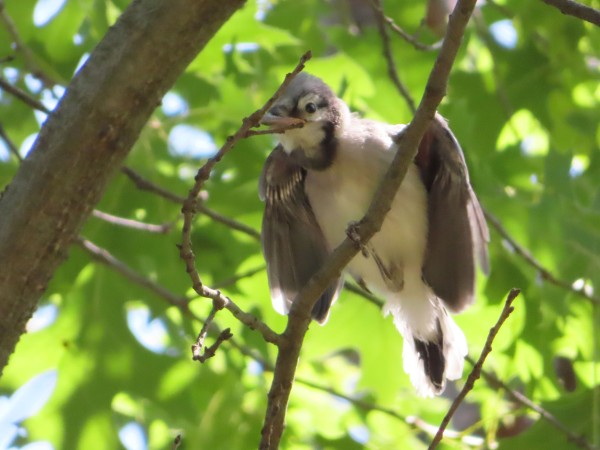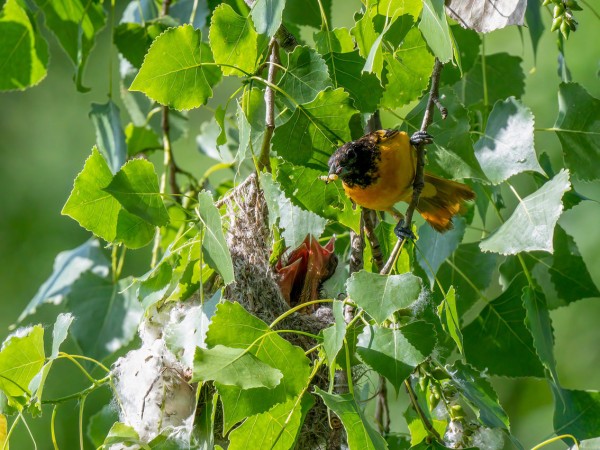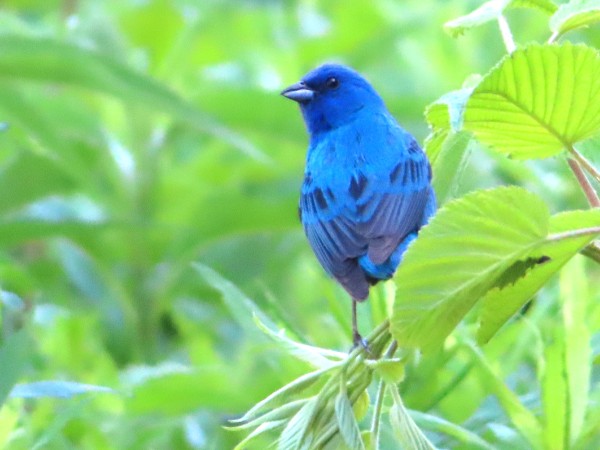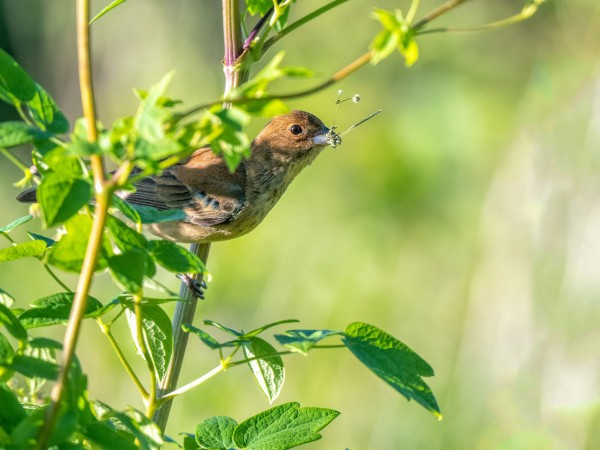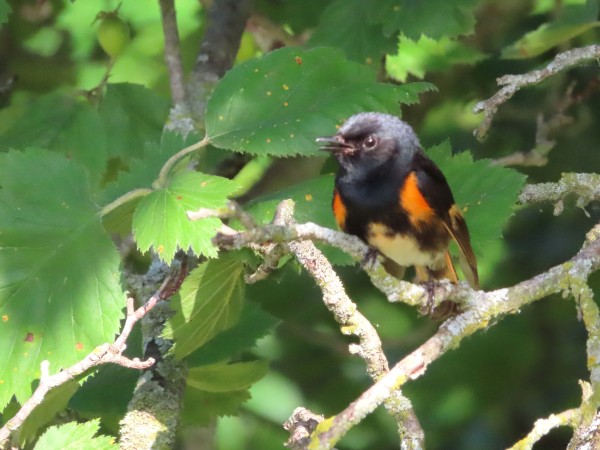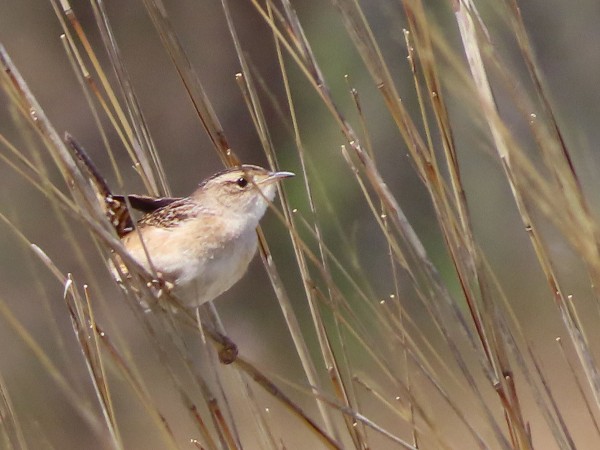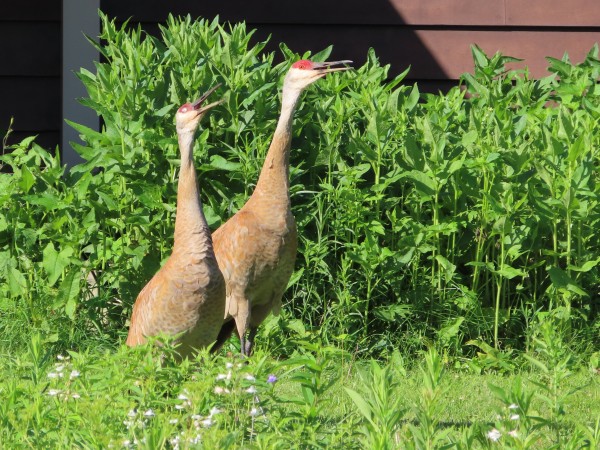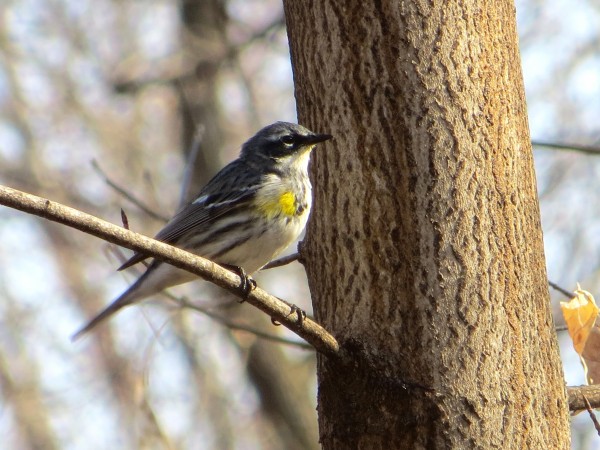Chuck's Birding Report #118
14 June - 20 June 2022
Dear fellow flock of birders,
What were the birds doing in the Arb this past week?
The birds continue to build nests, lay eggs, feed nestlings, feed the fledgling after they leave the nest and teach the fledglings how to find food on their own. I’m still seeing birds carrying nest material in their beaks. I’m also seeing adults carrying worms and insects in their beaks to share with their nestling or fledglings. It’s fun to try to follow these adult birds to find their nests or their fledglings.
The male Red-winged Blackbirds are chasing all kinds of birds away from their mates’ nests in the prairie or marsh. They not only chase other male Red-winged Blackbirds but also peck the backs of the Sandhill Cranes. I saw one male riding on the top of a Red-tailed Hawk. I thought it even vocalized a giddy up but I could be mistaken. Another great chaser is the Ruby- throated Hummingbird. It is fearless. Size means nothing to this little one.
The Eastern Bluebirds have fledged some of their young from the nest boxes. These fledglings are out and about but trying to stay close to mom or dad who continue to feed them. The fledglings have some blue feathers but are easy to identify by their white speckled plumage. Included is a photo of two Eastern Bluebird fledglings perched in a tree waiting to be fed.
Today while I was birding at the Grady Tract I saw some activity just a few yards from the parking lot. I then saw a Blue Jay flying around in the trees and two wing-fluttering fledglings following the adult around. I did see the adult bring food to both fledglings. I did not get a photo of the feeding but I did capture a photo of one of the fledglings. It had an unusual ring around its eye, a short, tan beak, mostly white and gray plumage and a short, fluffy tail. I did not see any blue. A photo of the Blue Jay fledgling is included.
One of the best sightings I had was at HoNeeUm. I went to look for a Baltimore Nest. In the past they usually built their nests in the Cottonwood Tree, especially in the branches that hang down over the water. I followed the boardwalk to the western end of the pond. In the northern corner of the pond there is a large Cottonwood and I found a branch hanging down over the water. Sure enough there was a Baltimore Oriole nest there. It was only a foot or two from the end of the branch. The nest is like a hanging basket, very different from other bird nests. David Liebl and I watched the nest for some time. As we watched the male and female Baltimore Orioles came to the nest and fed the nestlings. We could hardly see the nestlings until the parents brought them food. They would then stretch their necks up and open their beaks widely. We could see 3 nestlings. The nestlings were constantly making a soft, rising sound the whole time their parents were out looking for food. I didn’t get any good photos but Linda Deith took one that was really special and she shared it with us today. Thank you so much Linda! The included photo shows the female Baltimore Oriole feeding the open-mouthed nestlings.
Last week I showed photos of an Indigo Bunting male and female. The blue of the male is spectacular to me. I’ve seen it in the same location practically every day that I visit Juniper Knoll. It’s in the prairie just south of the Juniper Trees. I see the male but seldom see the female. The female I showed last week appeared dark brown. It was in the shade so was not showing its true colors. The female’s real color is a much lighter brown or cinnamon color. Linda Deith took a photo of the female in brighter light so that its true colors are displayed. I think the Indigo Buntings have a nest in that prairie. I have attached photos of both the male Indigo Bunting that I took and the female Indigo Bunting that Linda took. Thanks again to Linda Deith for her excellent photo.
At the west end of the Visitor Center parking lot the sound ID of Merlin tells me that there is an American Redstart in the area. I think a pair is nesting nearby. I got lucky and saw it today. I was able to capture a so-so photo of it. It is a photo of a male American Redstart in its stunning black and orange plumage. The photo is included.
I have tried to find the Sedge Wren down by the willows on Curtis Prairie that everyone tells me is there. The sound ID on Merlin tells me it’s there too. I finally saw it on Sunday. My photo was not good enough to include today so I pulled one taken some time ago. It is included.
Also on Sunday a pair of Sandhill Cranes were standing at the backdoor of the Visitor Center. They were making the distinctive unison calling when the male starts the call and the female immediately responds. I thought they were demanding entry into the Visitor Center but it’s more likely they were so impressed by their reflection in the glass of the doors that they had to announce how good they looked by bugling. A photo of the bugling cranes is included. Note that one of the cranes appears to have a white eye. That happens when any bird pulls its nictitating membrane, aka 3rd eyelid, over the eyeball.
My last bird is a video created by Cynthia Carlson called The Blue-gray Gnatcatcher Nest. It’s an amazing video showing the nest with two nestlings and the parents bringing food to the young. Here’s the link to the YouTube video.
By the way I hope that you all take the time to see the beauty of the wildflowers in the Arb too. This past week the blue (purple) of the Spiderwort and the white of the Beardstongue were truly spectacular. I also saw lots of other wildflowers that are ready to pop any moment and show their flowers this coming week. Besides wildflowers the butterflies and dragonflies are numerous. I also saw half inch sized toads crossing the path going to Teal Pond today.
We are truly lucky to have such a wonderful natural landscape!
That’s the Arboretum bird report for the past week.
I wish all of you good health and good birding too,
Chuck

